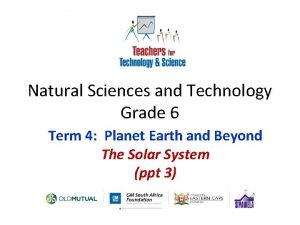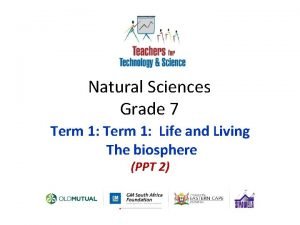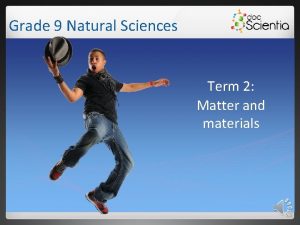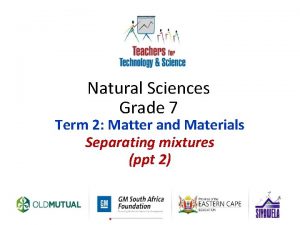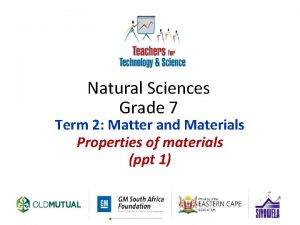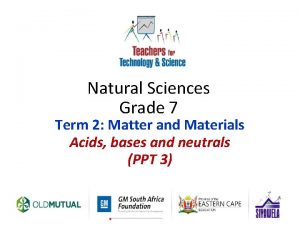Natural Sciences Grade 7 Term 2 Matter and









- Slides: 9

Natural Sciences Grade 7 Term 2: Matter and Materials Introduction to the Periodic Table of Elements

Topic 4 Introduction to the Periodic Table of Elements Some properties of metals, semi-metals and non-metals Natural Sciences - Grade 7

Properties of metals • Shiny. • Hard (some are soft e. g sodium, lithium, potassium and can be cut with a knife). • Good conductors of heat and electricity. • Malleable (can be bent, pounded and flattened into thin sheets - known as foil -, without breaking). Natural Sciences - Grade 7

Properties of metals • Ductile (can be stretched into thin wires). • Solid at room temperature (except mercury and gallium which are liquids at room temperature). • High boiling points. • High density. • High melting points. • Magnetic (iron, nickel and cobalt). Natural Sciences - Grade 7

Properties of non-metals • Have a variety of different properties (depending on whether they are gases, liquids or solids). • Poor conductors of heat and electricity. • Brittle (breaks easily in solid form, thus not malleable). • Cannot bend without breaking. • Cannot be shaped. • Cannot be stretched (not ductile). • Dull (not shiny). Natural Sciences - Grade 7

Properties of non-metals • Not magnetic. • Low melting points. • Many non-metals are gases at room temperature. • Do not reflect light. Natural Sciences - Grade 7

Properties of semi-metals • Have some properties of metals and some properties of non-metals. • Examples: (B) Boron; (Te) Tellurium; (Si) Silicon; (Sb) Antimony; (Ge) Germanium; (As) Arsenic • Referred to as metalloids. Natural Sciences - Grade 7

Properties of semi-metals Silicon • Most common semi-metal. • Shiny (a metal property). • Brittle, not ductile, not malleable (a non-metal property). Boron and Germanium • Shiny (a metal property). • Hard and brittle (non-metal properties). • Conducts electricity (not as well as metals; called semiconductors - used in phones, radios and computers). Natural Sciences - Grade 7

Uses of semi-metals • Sand is a compound of silicon known as silicon dioxide which is used to make glass. • Silicon and Germanium are used: - to make optical fibres (thin tubes of glass , slightly thicker than human hair; very light). - in electrical devices (e. g. cell phones). • Antimony, Tellurium and Germanium are used to make re-writable DVD’s. Natural Sciences - Grade 7
